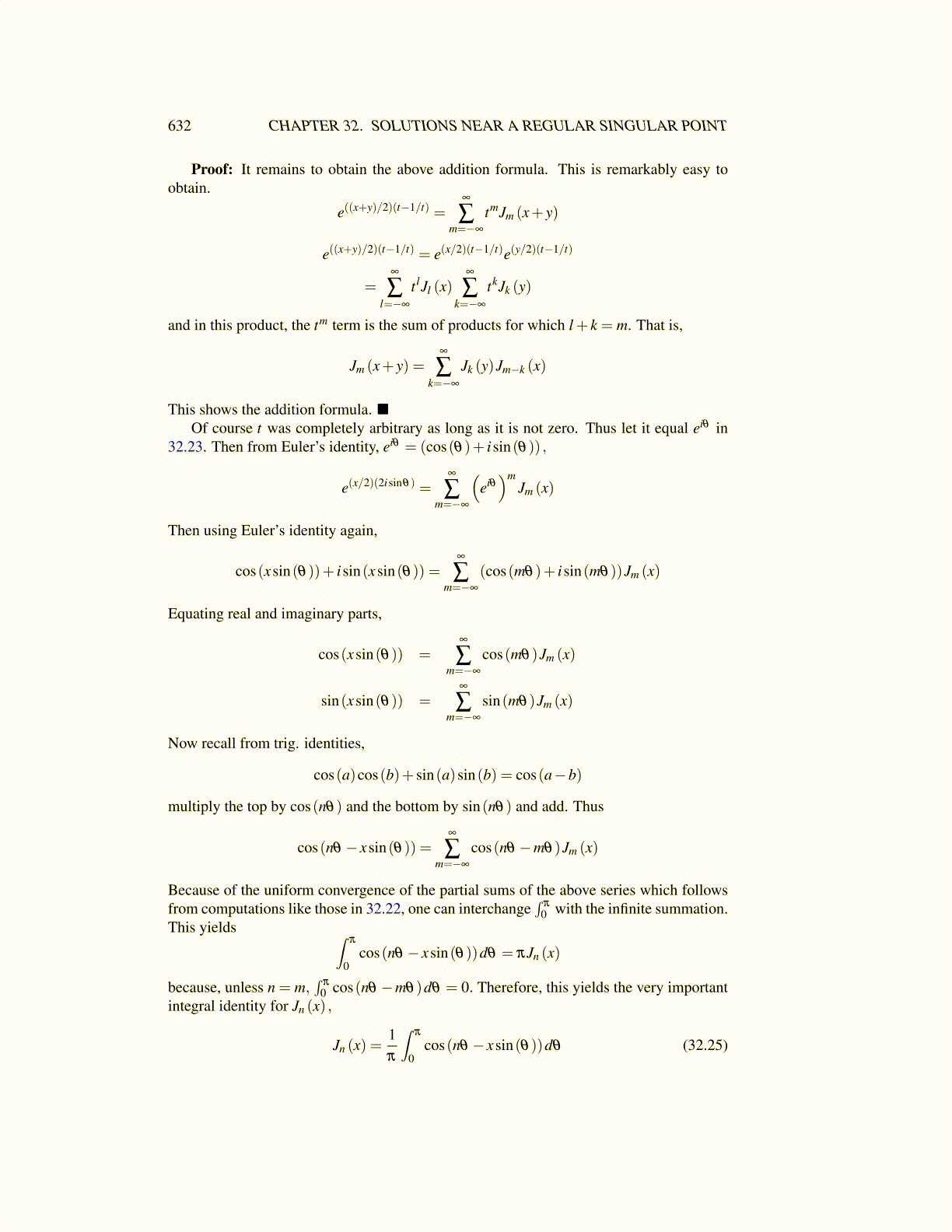
632 CHAPTER 32. SOLUTIONS NEAR A REGULAR SINGULAR POINT
Proof: It remains to obtain the above addition formula. This is remarkably easy toobtain.
e((x+y)/2)(t−1/t) =∞
∑m=−∞
tmJm (x+ y)
e((x+y)/2)(t−1/t) = e(x/2)(t−1/t)e(y/2)(t−1/t)
=∞
∑l=−∞
t lJl (x)∞
∑k=−∞
tkJk (y)
and in this product, the tm term is the sum of products for which l + k = m. That is,
Jm (x+ y) =∞
∑k=−∞
Jk (y)Jm−k (x)
This shows the addition formula. ■Of course t was completely arbitrary as long as it is not zero. Thus let it equal eiθ in
32.23. Then from Euler’s identity, eiθ = (cos(θ)+ isin(θ)) ,
e(x/2)(2isinθ) =∞
∑m=−∞
(eiθ)m
Jm (x)
Then using Euler’s identity again,
cos(xsin(θ))+ isin(xsin(θ)) =∞
∑m=−∞
(cos(mθ)+ isin(mθ))Jm (x)
Equating real and imaginary parts,
cos(xsin(θ)) =∞
∑m=−∞
cos(mθ)Jm (x)
sin(xsin(θ)) =∞
∑m=−∞
sin(mθ)Jm (x)
Now recall from trig. identities,
cos(a)cos(b)+ sin(a)sin(b) = cos(a−b)
multiply the top by cos(nθ) and the bottom by sin(nθ) and add. Thus
cos(nθ − xsin(θ)) =∞
∑m=−∞
cos(nθ −mθ)Jm (x)
Because of the uniform convergence of the partial sums of the above series which followsfrom computations like those in 32.22, one can interchange
∫π
0 with the infinite summation.This yields ∫
π
0cos(nθ − xsin(θ))dθ = πJn (x)
because, unless n = m,∫
π
0 cos(nθ −mθ)dθ = 0. Therefore, this yields the very importantintegral identity for Jn (x) ,
Jn (x) =1π
∫π
0cos(nθ − xsin(θ))dθ (32.25)